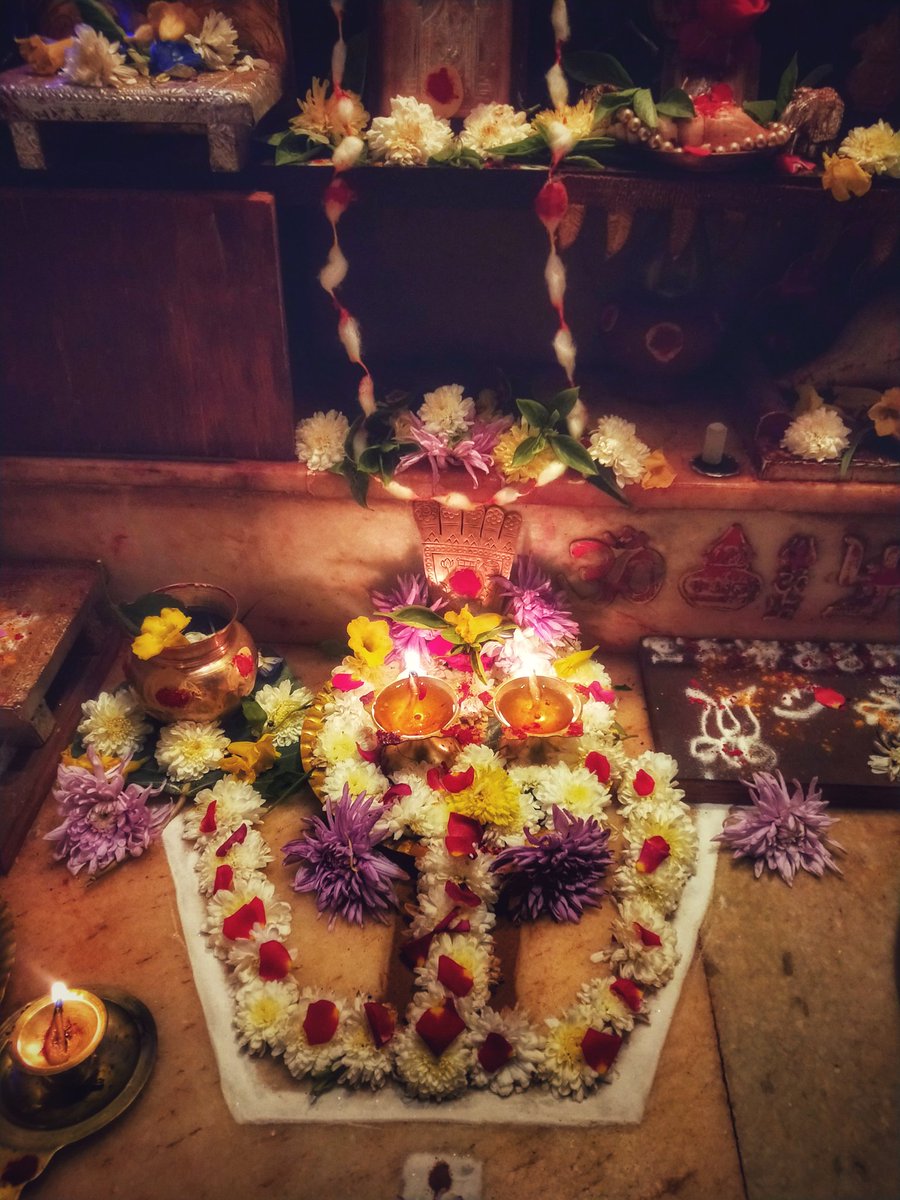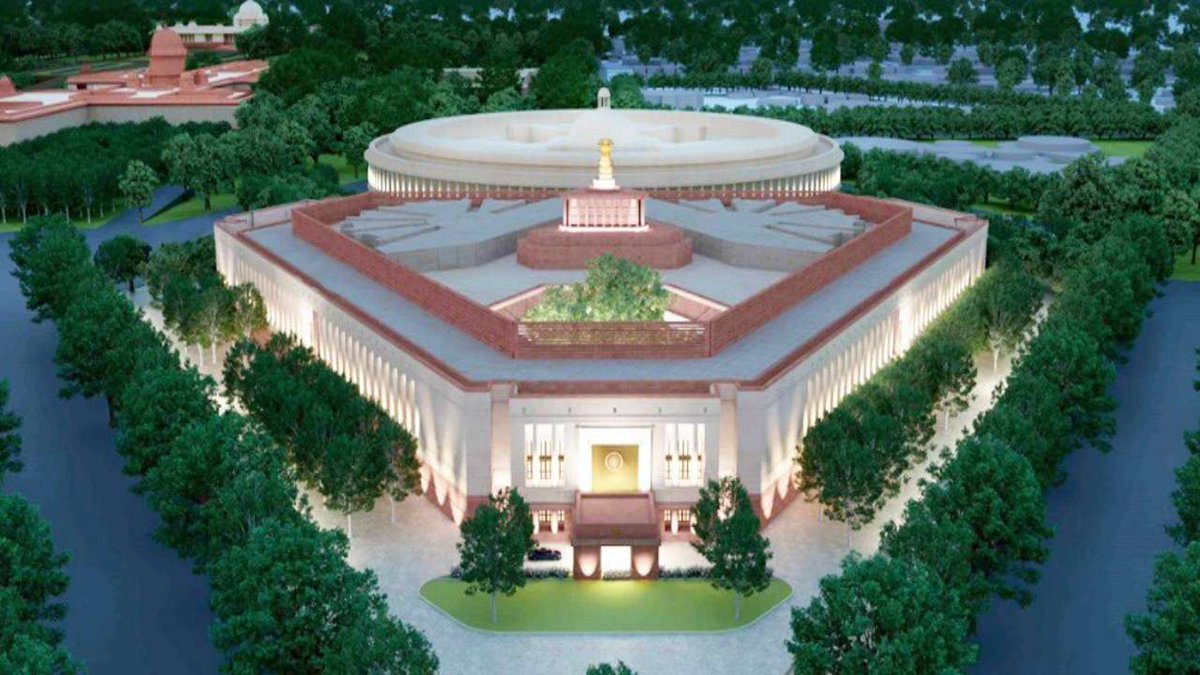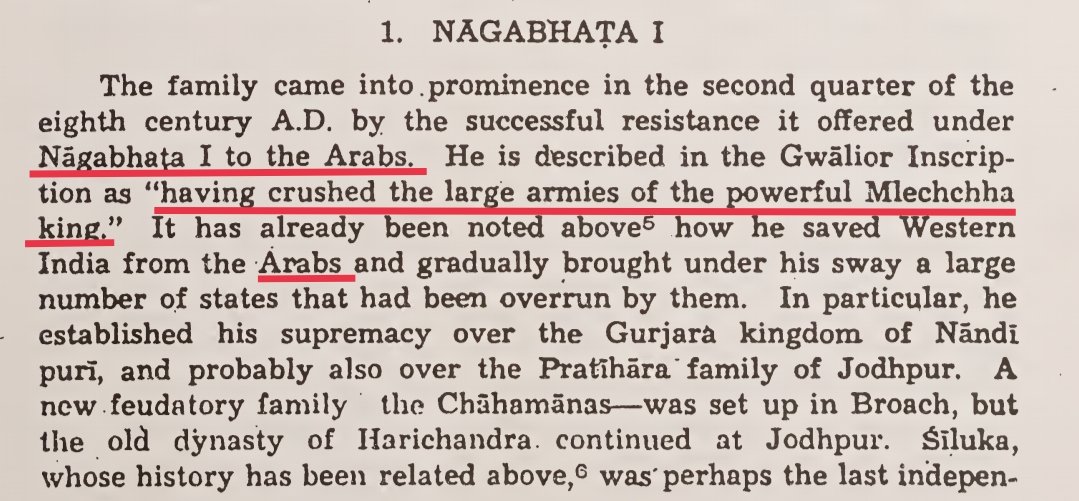
THREAD on ancient Hindu system of measurement(मानापकरणविधानम्)
The Shilpa shastras give much insight into how dimensions such as length,width,height etc were measured. It is using this system that the smallest of murthis to the biggest of buildings were planned & constructed (1)

The Shilpa shastras give much insight into how dimensions such as length,width,height etc were measured. It is using this system that the smallest of murthis to the biggest of buildings were planned & constructed (1)
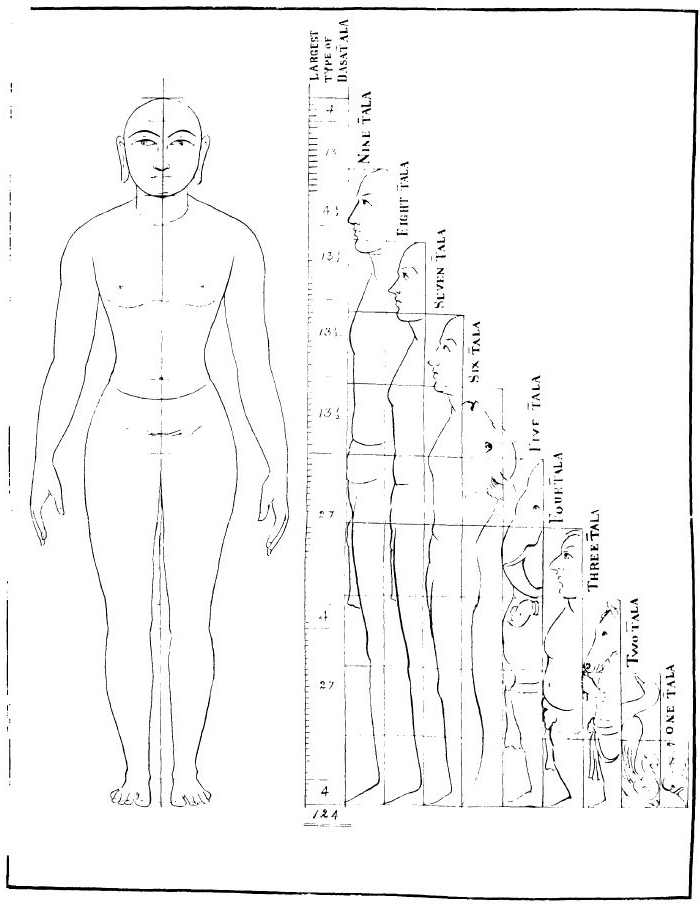

Before defining the different units of measurement, the Shilpa shastra makes a brief reference to the prerequisites of those who must be well versed in this subject in order to carry out the task of planning & construction. i.e the Architects. (2)
The Architects are classified into 4 different categories. They are:
1) Sthapati
2) Sutragrahin
3) Vardhaki
4) Takshaka
Each one of the above have a specific role in the process of planning & construction (3)
1) Sthapati
2) Sutragrahin
3) Vardhaki
4) Takshaka
Each one of the above have a specific role in the process of planning & construction (3)
स्थपतिः सर्वशास्त्रज्ञः सूत्रपाहीति सूत्रधृत्
वर्धकी(किर्) मानकर्मज्ञः तक्षणात्तक्षकः स्मृतः
Shastras say Sthapati must be well versed in all Shastras, Sutragrahin holds the Sutra(measuring rope), Vardhaki is well versed in measuring & Takshaka is well versed in carpentry (4)
वर्धकी(किर्) मानकर्मज्ञः तक्षणात्तक्षकः स्मृतः
Shastras say Sthapati must be well versed in all Shastras, Sutragrahin holds the Sutra(measuring rope), Vardhaki is well versed in measuring & Takshaka is well versed in carpentry (4)
In the hierarchy of architects; the Sthapati holds the highest of positions. He is the master builder. He is the guide of the other 3. The Sutragrahin is required to be an expert in architectural drawing, the Vardhaki in the area of painting & Takshaka with wood work (5)
मुनीनां नयनोद्वीक्ष्य(च्य) तत्परमाणुरुदाहृतम्
ताभिरष्टाभिर्गुणितं रथधूलिरिति स्मृतम्
Shastra defines the smallest unit of measurement as a Paramanu (an atom). It is that unit which is perceptible to eyes of the Rishis. 8 Paramanu make what is called a Ratha-dhuli(molecule) (6)
ताभिरष्टाभिर्गुणितं रथधूलिरिति स्मृतम्
Shastra defines the smallest unit of measurement as a Paramanu (an atom). It is that unit which is perceptible to eyes of the Rishis. 8 Paramanu make what is called a Ratha-dhuli(molecule) (6)
रथधूल्यष्टमिलितं वालाग्र मिति स्मृतम्
वालागैरष्टधायुक्तं लिक्षा परिकीर्तितम्
8 such Ratha-dhuli combined together form a वालाग्र/Valagra (hair end)
8 hair-ends joined together form what is known as a लिक्षा/Liksha (a nit)
Nits are eggs of lice (insect)
(7)
वालागैरष्टधायुक्तं लिक्षा परिकीर्तितम्
8 such Ratha-dhuli combined together form a वालाग्र/Valagra (hair end)
8 hair-ends joined together form what is known as a लिक्षा/Liksha (a nit)
Nits are eggs of lice (insect)
(7)
लिचे(क्षाभि)श्चाष्टभिरायुक्तं यूकं तमि(दि)ति कथ्यते
यूकैरष्टाभिः(भिश्च) प्रोक्तं यवमेवं विधीयते
8 Likshas (nits) combined together form a यूक/Yuka (one lice insect)
8 Yukas combined together give us a यव/Yava (barleycorn)
Barleycorn is 1/3rd of an inch (around 8.47 mm)
(8)
यूकैरष्टाभिः(भिश्च) प्रोक्तं यवमेवं विधीयते
8 Likshas (nits) combined together form a यूक/Yuka (one lice insect)
8 Yukas combined together give us a यव/Yava (barleycorn)
Barleycorn is 1/3rd of an inch (around 8.47 mm)
(8)
यवैरष्टसमायुक्तमङ्गलं तत्प्रकीर्तितम्
8 Yavas (barleycorn) combined together give us an Angula (finger breadth). The Angula is the most important usable unit of measurement . It has been used & mentioned in the Rig Veda. Angula forms the basis for other bigger units. (9)
8 Yavas (barleycorn) combined together give us an Angula (finger breadth). The Angula is the most important usable unit of measurement . It has been used & mentioned in the Rig Veda. Angula forms the basis for other bigger units. (9)
मानमात्रं त्रिधा प्रोक्तं यववृद्धिविशेषतः
षट्सप्ताष्टयवैरेतत्कनिष्ठो(ष्ठ)मध्यमोत्तमम्
To account for different finger breadths, the Angula has been further classified into 3 different types. The small (6 yavas), the intermediate (7 yavas) & the large (8 yavas).
(10)
षट्सप्ताष्टयवैरेतत्कनिष्ठो(ष्ठ)मध्यमोत्तमम्
To account for different finger breadths, the Angula has been further classified into 3 different types. The small (6 yavas), the intermediate (7 yavas) & the large (8 yavas).
(10)
12 Angulas together are called one वितस्ति/Vitasti.
Vitasti is the distance between the tips of the stretched out thumb & ring finger.
(11)
Vitasti is the distance between the tips of the stretched out thumb & ring finger.
(11)

2 Vitasti make a किष्कु/Kishku (small cubit)
An Angula added to one Kishku is called प्राजापत्य/Prajapatya(cubit)
(A cubit is the distance between tip of the middle finger to elbow)
25 Angulas together give us 1 Prajapatya Hasta
(12)
An Angula added to one Kishku is called प्राजापत्य/Prajapatya(cubit)
(A cubit is the distance between tip of the middle finger to elbow)
25 Angulas together give us 1 Prajapatya Hasta
(12)

षड्विंशत्यङ्गुलो हस्तो धनुर्मुष्टिरिति स्मृतम्
A cubit of 26 Angulas is called a धनुर्मुष्टि/Dhanur-mushti (bowlength)
सप्तविंशतिकाङ्गुल्यं हस्तमुक्तं धनुर्ग्रहम[हः]
A cubit of 27 Angulas is called a धनुर्ग्रह/ Dhanur-graha.
(13)
A cubit of 26 Angulas is called a धनुर्मुष्टि/Dhanur-mushti (bowlength)
सप्तविंशतिकाङ्गुल्यं हस्तमुक्तं धनुर्ग्रहम[हः]
A cubit of 27 Angulas is called a धनुर्ग्रह/ Dhanur-graha.
(13)
चतुर्हस्तं धनुर्दण्डं दण्डाष्टं रज्जुमेव च
4 Dhanur mushtis make a दण्डा/Danda (churning stick)
8 such Dandas make what is known as a रज्जु/Rajju (measuring rope)
(14)
4 Dhanur mushtis make a दण्डा/Danda (churning stick)
8 such Dandas make what is known as a रज्जु/Rajju (measuring rope)
(14)

Each of the above units of measurement has a specific utility.
The Kishku measurement is recommended for the making of conveyances like chariots. It is also made use for the making of furniture.
Prajapatya measurement is used for planning & construction of mansions. (15)
The Kishku measurement is recommended for the making of conveyances like chariots. It is also made use for the making of furniture.
Prajapatya measurement is used for planning & construction of mansions. (15)
Dhanurgraha measurement is used in the planning of villages, towns, cities.
There are bigger units of measurements like Gavyuti & Yojanas which are used for measuring geographical distances.
The scope of this thread is limited to measurements used in Architecture. (16)
There are bigger units of measurements like Gavyuti & Yojanas which are used for measuring geographical distances.
The scope of this thread is limited to measurements used in Architecture. (16)
To summarize how we arrived from the smallest unit of absolute measure (Paramanu) to Rajju (measuring rope)
It is using this system of measurement that all of the most intricate murthis to the biggest of Temples/Palaces/Cities of ancient Bharat were planned & constructed.
/end
It is using this system of measurement that all of the most intricate murthis to the biggest of Temples/Palaces/Cities of ancient Bharat were planned & constructed.
/end
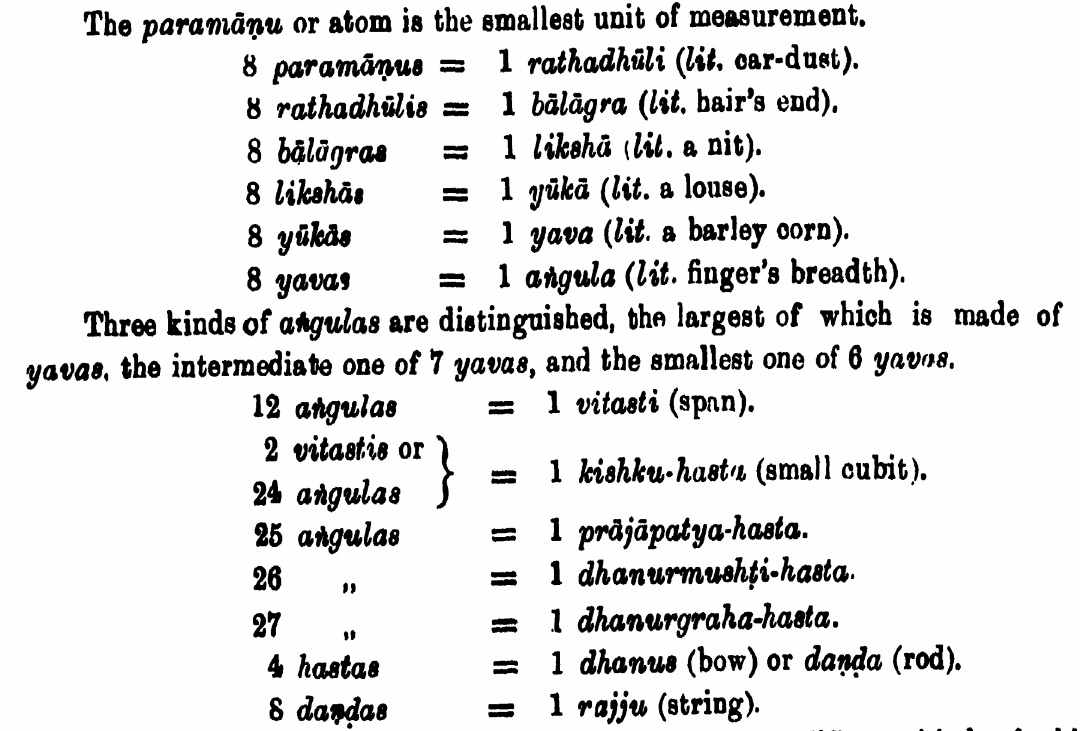
The above has to be read in conjunction with the below thread on why there is a dire need to revive Hindu Architectural methods if we are to plan & construct buildings/towns/cities that reflect the true glory of our Hindu civilization going forward.
https://twitter.com/_ugra_/status/1337277091662811136
• • •
Missing some Tweet in this thread? You can try to
force a refresh


